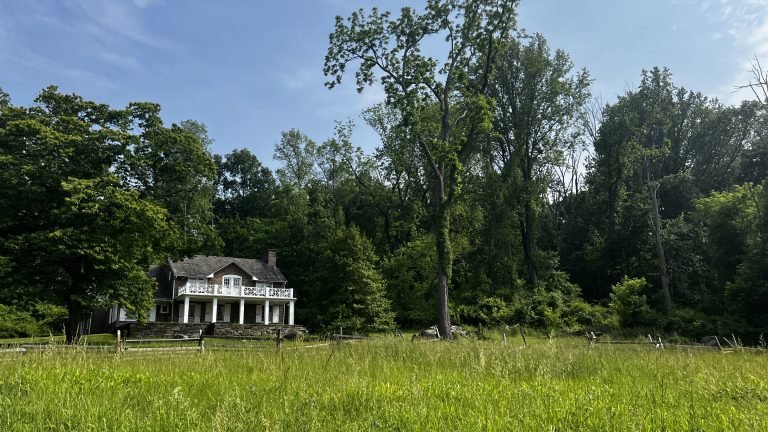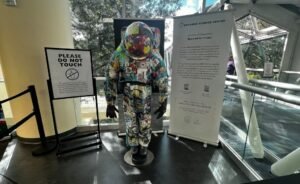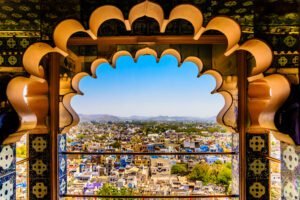This post may contain affiliate links, which means I may earn a small commission from purchased products at no additional cost to you. See my full disclosure here.
If you’ve never traveled to southeastern Pennsylvania, you may be familiar with its undulating landscape of hills, meandering creeks, and swaths of farmland. The works of celebrated painter Andrew Wyeth created a portal to this peaceful corner of Pennsylvania, historically known as Quaker country, rendered in tempera, sketches, and watercolors.
The Brandywine Museum
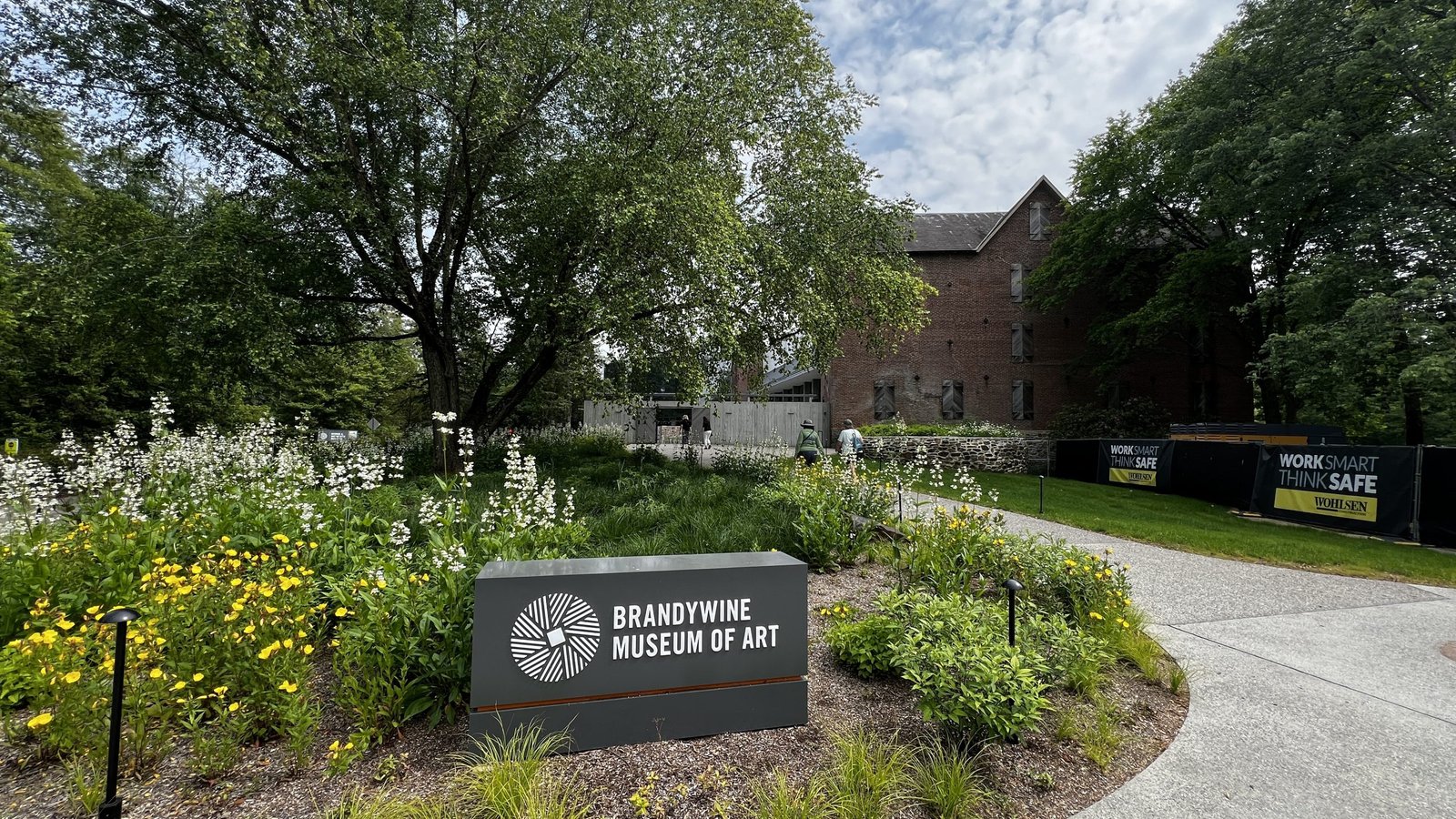
The Brandywine Museum of Art in Pennsylvania is the steward of the lives and legacies of three generations of one of America’s most iconic artistic families: the Wyeths.
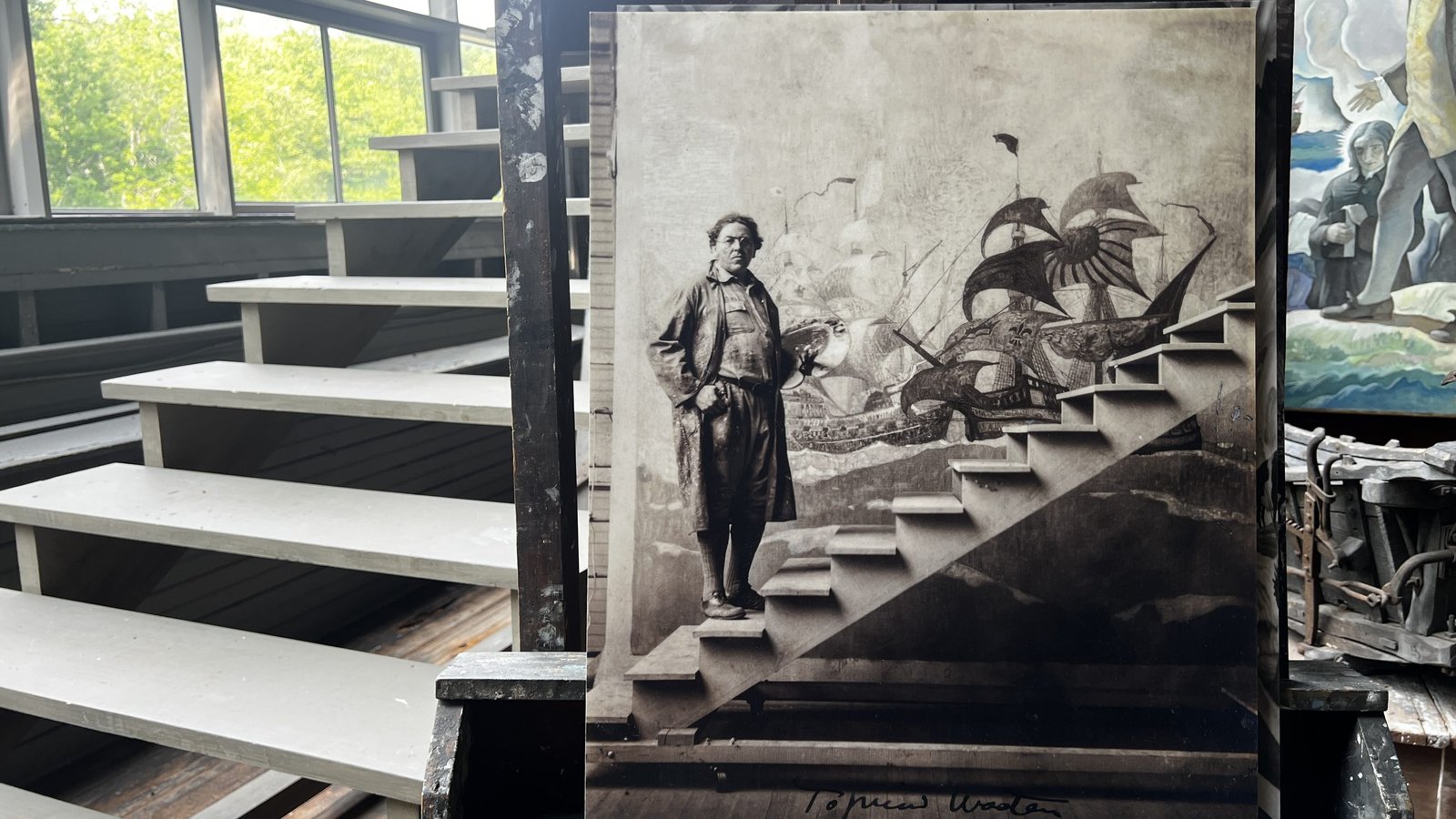
The Wyeth Family Legacy
N.C. and his wife, Carolyn Bockius Wyeth, had five children, four of whom became artists. Andrew Wyeth, his son, became one of America’s most celebrated realist painters. Henriette Wyeth was an accomplished portraitist and still-life painter. N.C.’s grandson, Jamie Wyeth, continues the family’s artistic tradition.
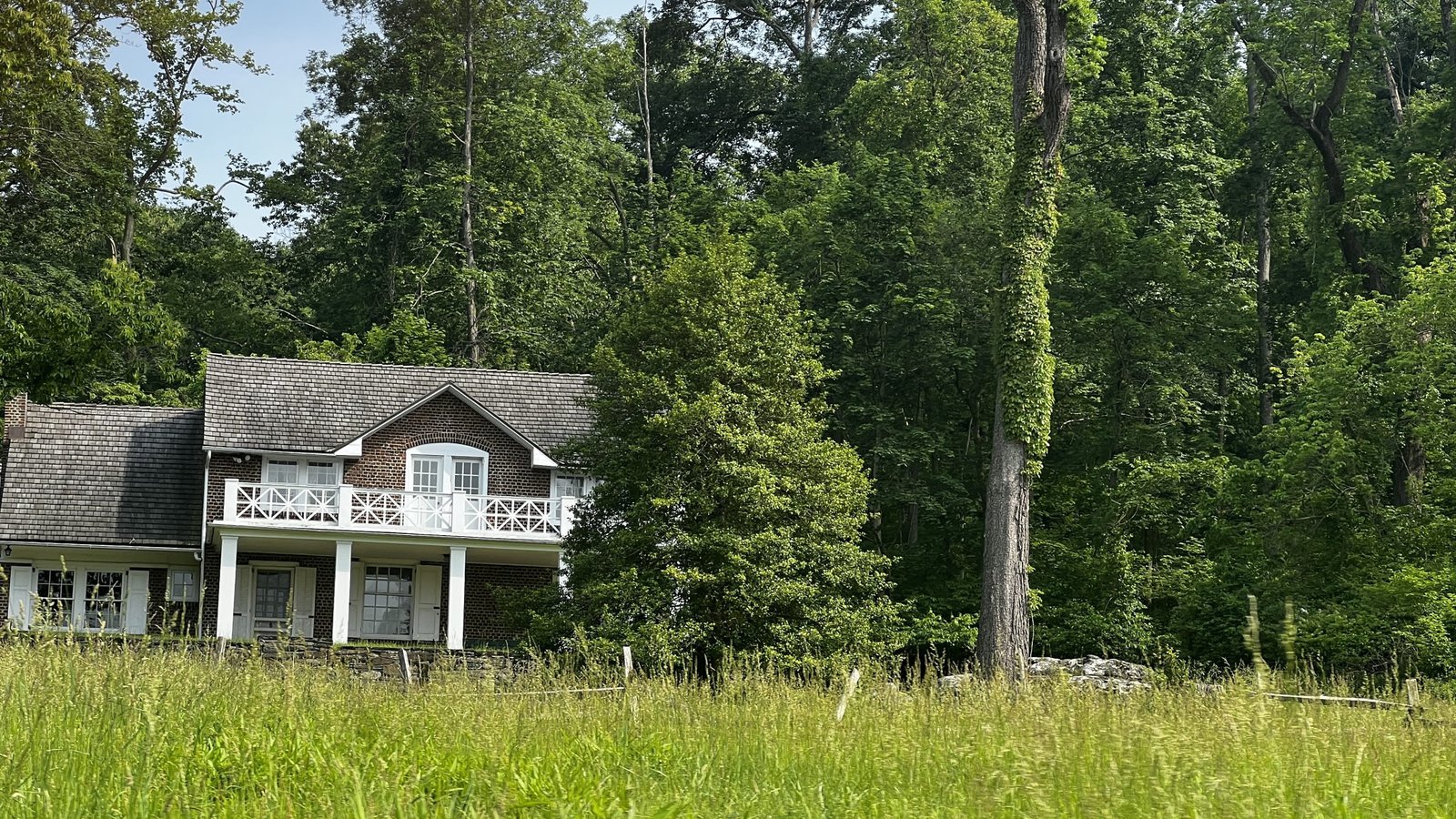
N.C. Wyeth’s Move to Chadds Ford
In 1908, the Massachusetts-born illustrator moved to Chadds Ford, Pennsylvania, and, according to the museum, built a home and studio in 1911 from the proceeds he earned illustrating the book Treasure Island, surrounded by rolling hills. The property remained in the Wyeth family until 1982, when his five children gifted it to the Brandywine Conservancy and Museum.
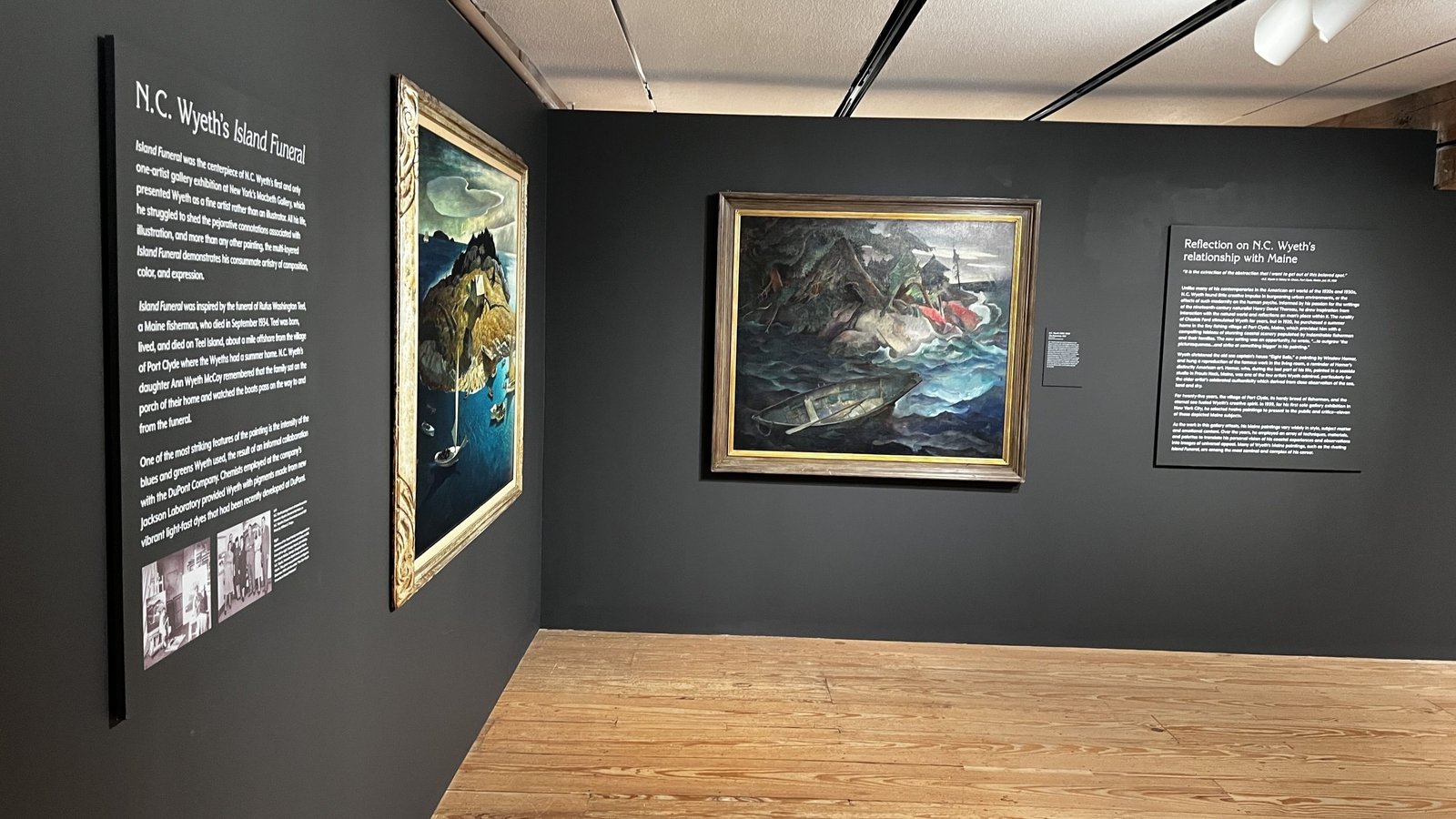
How the Museum Honors the Wyeths
Today, the Brandywine Museum pays homage to the Wyeth family’s artistic legacy and its ties to Pennsylvania, showcasing the family’s artwork and offering guided tours of the Wyeth family’s property. The museum, situated in a 19th-century mill overlooking the banks of the Brandywine River, also showcases the works of regional artists.
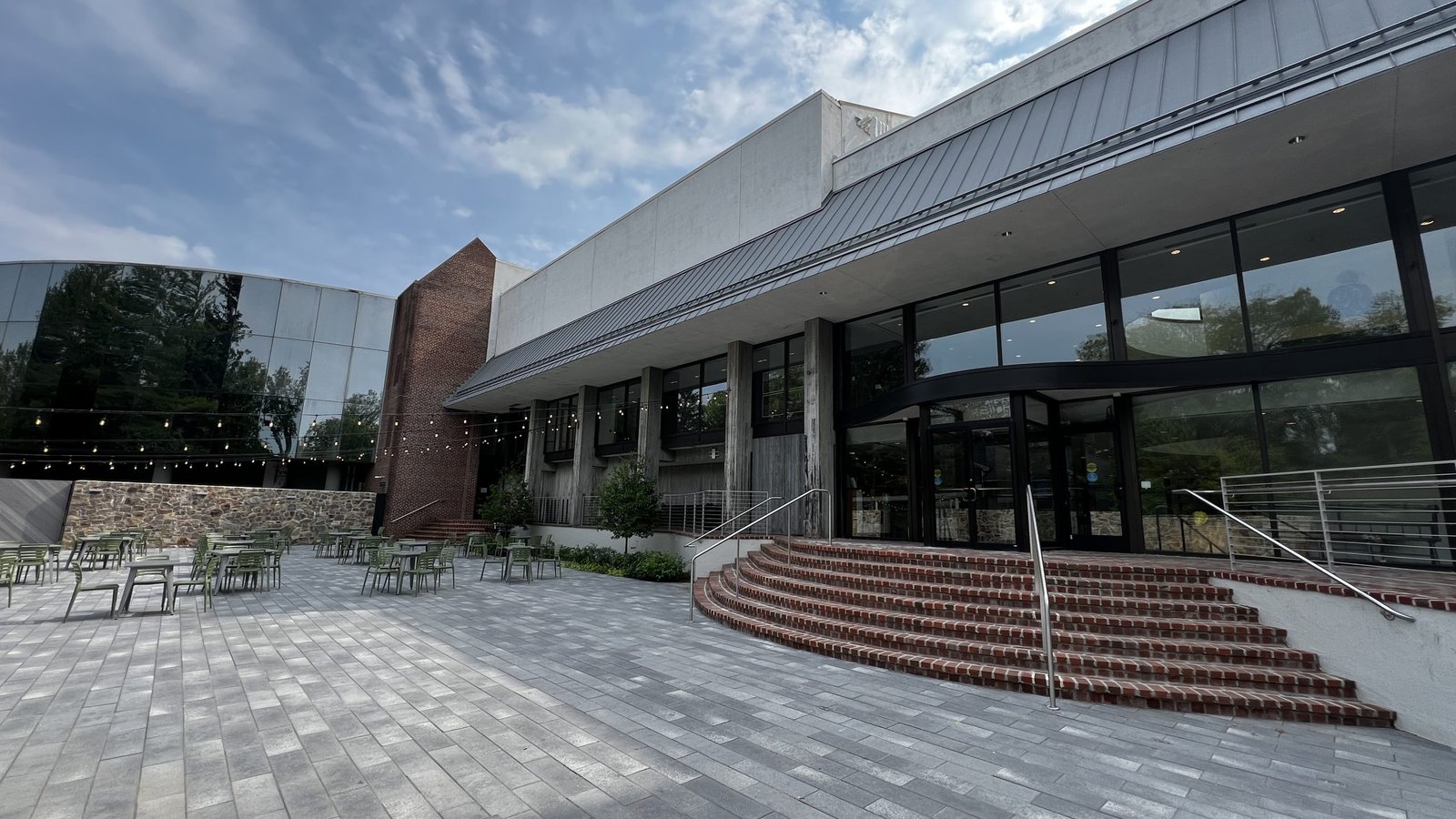
The Wyeth Art Collection
The Wyeth collection on display includes the novel Treasure Island, which N.C. illustrated, one of several notable books he illustrated. N.C.’s bold and adventurous illustrations draw you in with narrative power. His son, Andrew Wyeth, produced moody, introspective works, many of which featured a singular obsession with a nearby farm belonging to the Kuerner family. N.C.’s grandson Jamie Wyeth brings a contemporary energy, carrying the torch forward with vibrant, sometimes whimsical, portrayals.
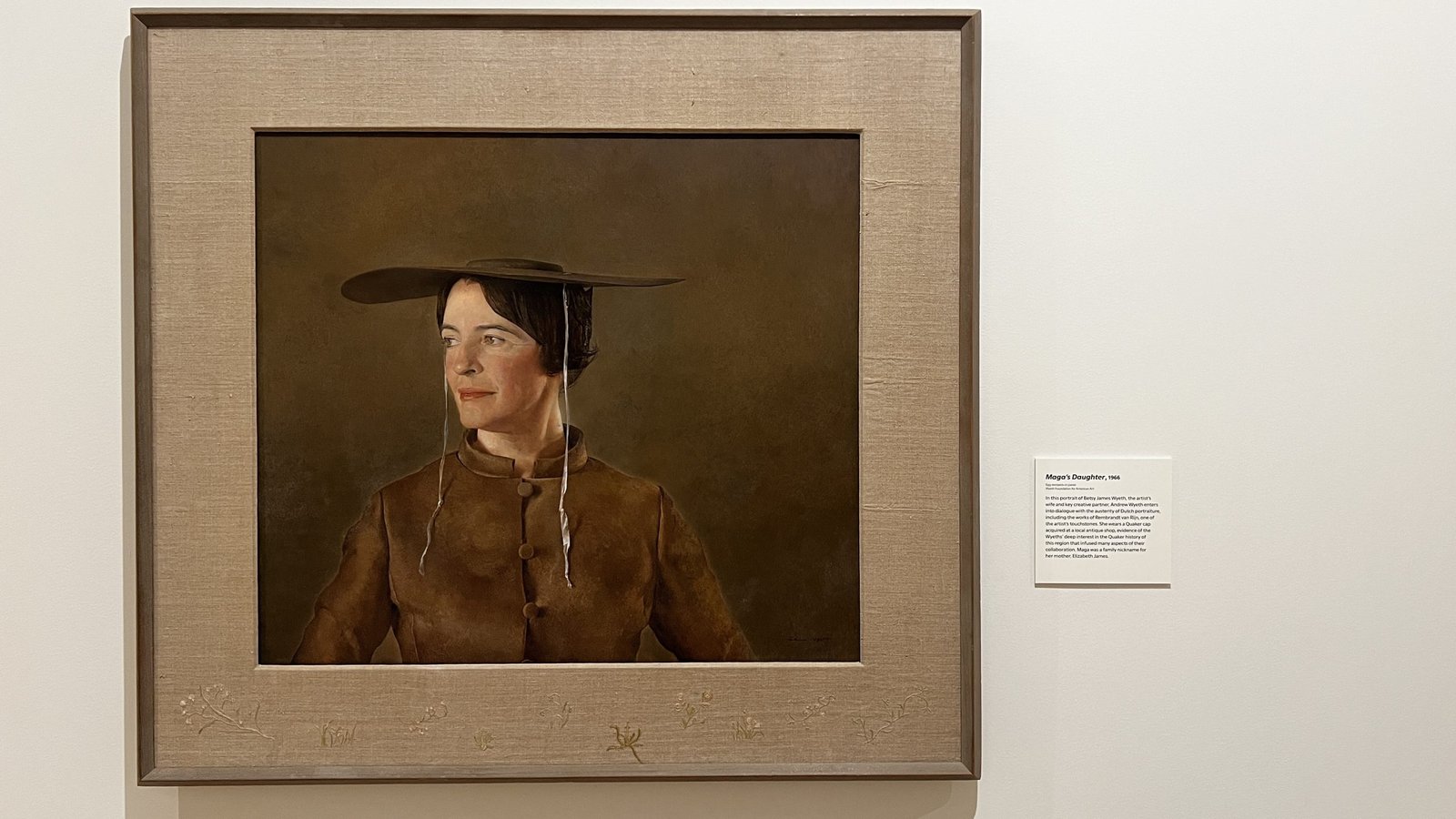
Visiting the Kuerner Farm Exhibition
On the day I visited, the museum was hosting the exhibition “Andrew Wyeth at Kuerner Farm: The Eye of the Earth,” commemorating the 25th anniversary of Kuerner Farm’s transition from a family home to a public site. The Conservancy acquired the Kuerner Farm in 1999 thanks to the generosity of the Kuerner family. Kuerner Farm is situated just a short walk from Andrew Wyeth’s studio, which offers guided tours.
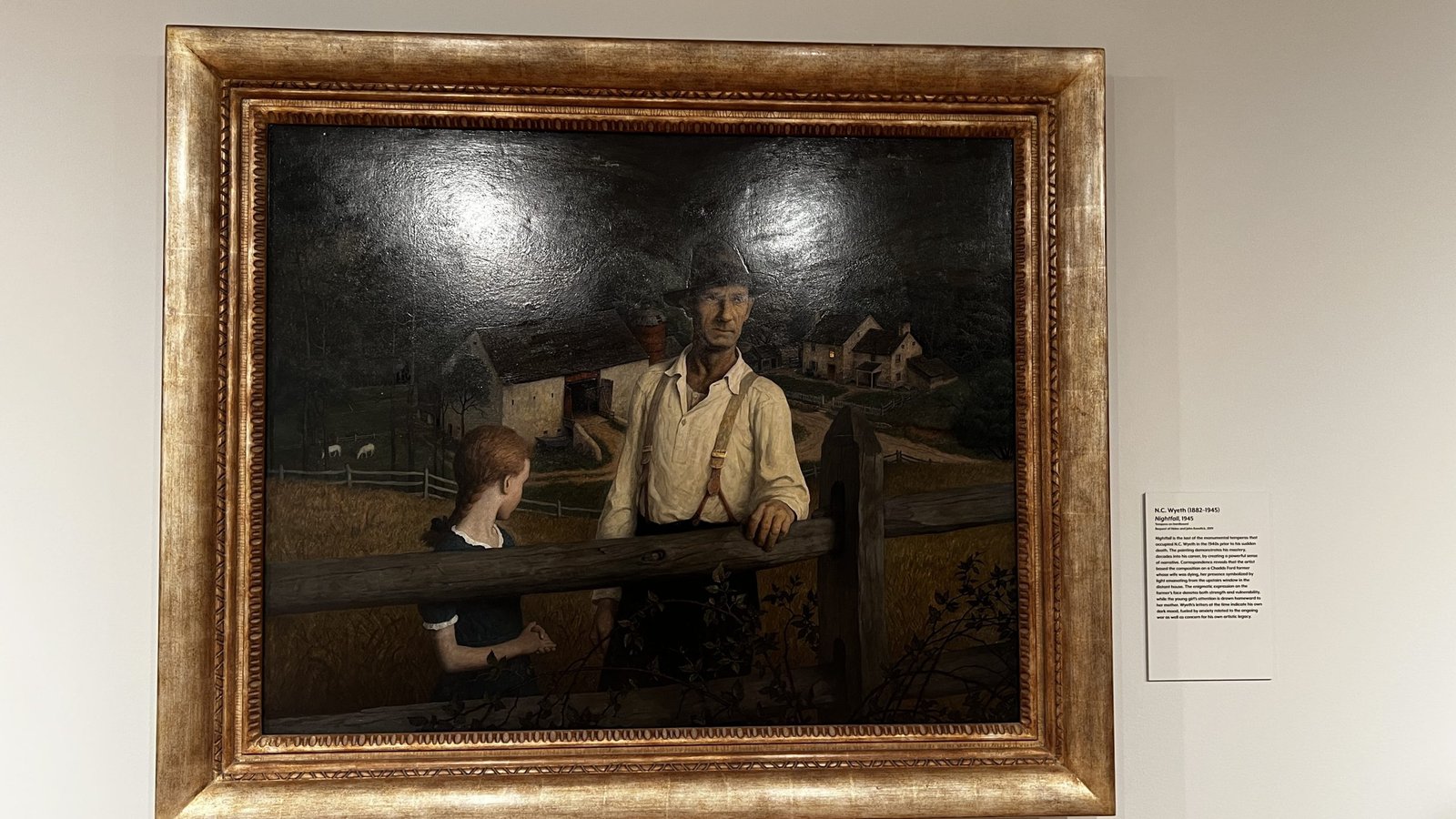
What’s in the Exhibition
This nationally traveling exhibition—co-organized by the Brandywine and the Reynolda House Museum of American Art in Winston-Salem, NC—features nearly 50 paintings, including significant works loaned from both private and public collections nationwide, as well as previously unexhibited pieces that will be making their public debut. Iconic Kuerner works on display include Karl and Snow Hill, Wolf Moon, and First Snow. Andrew Wyeth’s lifelong fascination with Kuerner Farm in Chadds Ford, Pennsylvania, began as a teenager. Andrew formed a bond with the Kuerners, especially Karl and Anna. Their friendship and openness granted him intimate access to the property—inside the farmhouse, barns, and fields, as well as ponds and people, subjects and motifs that appear in hundreds of Andrew’s drawings and paintings. Andrew also found a muse in Helga Testorf, who nursed Karl at the farm, painting her likeness in the famed Helga Pictures series.
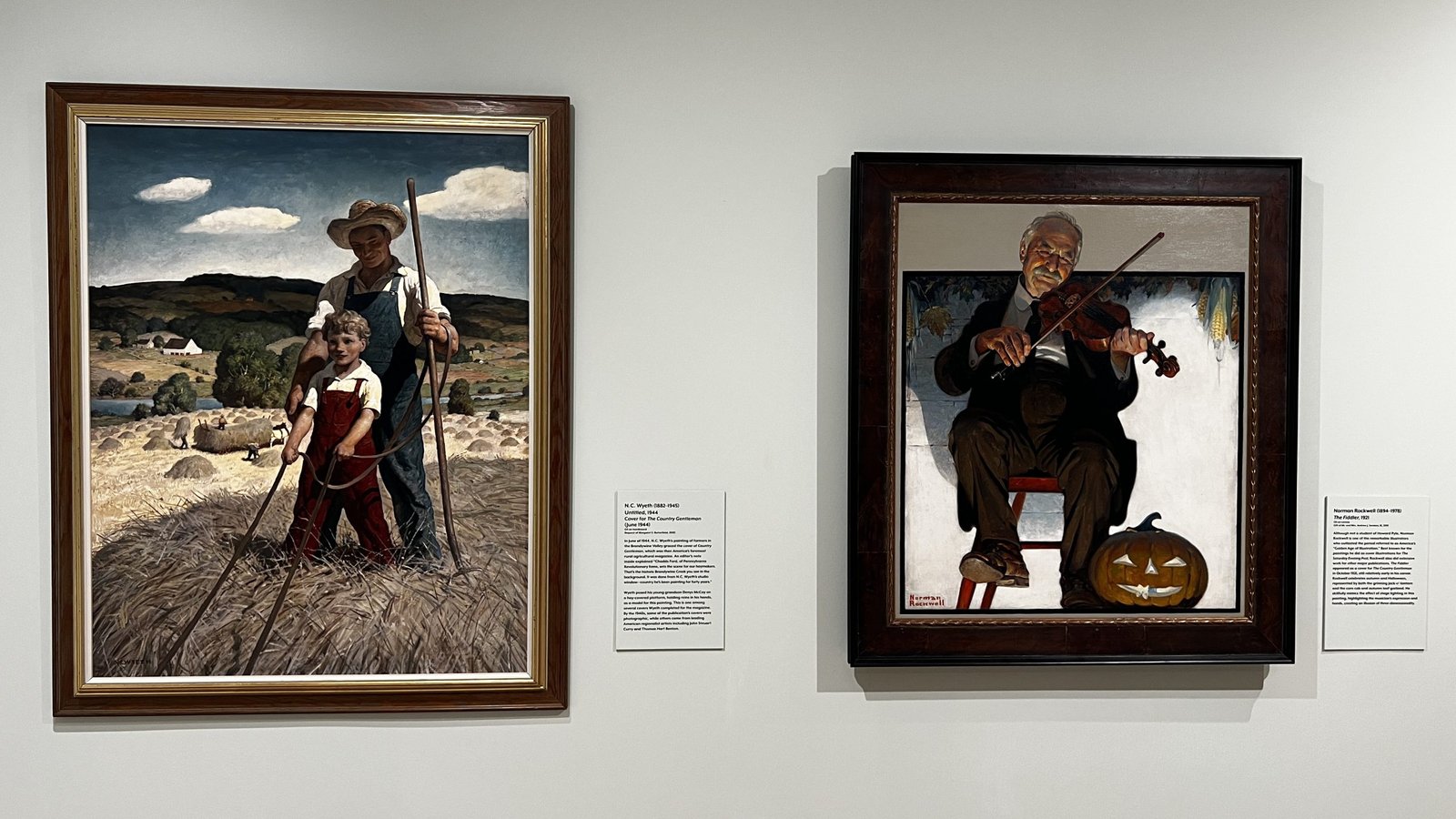
N.C. Wyeth’s Work as an Illustrator
During his time in Chadds Ford, N.C.’s career thrived as a sought-after illustrator, producing art for notable works including Treasure Island, Robin Hood, Kidnapped, The Last of the Mohicans, Robinson Crusoe, and Rip Van Winkle. N.C. worked from his studio on site, a whitewashed, clapboard-clad building with large, angled, and arched windows.
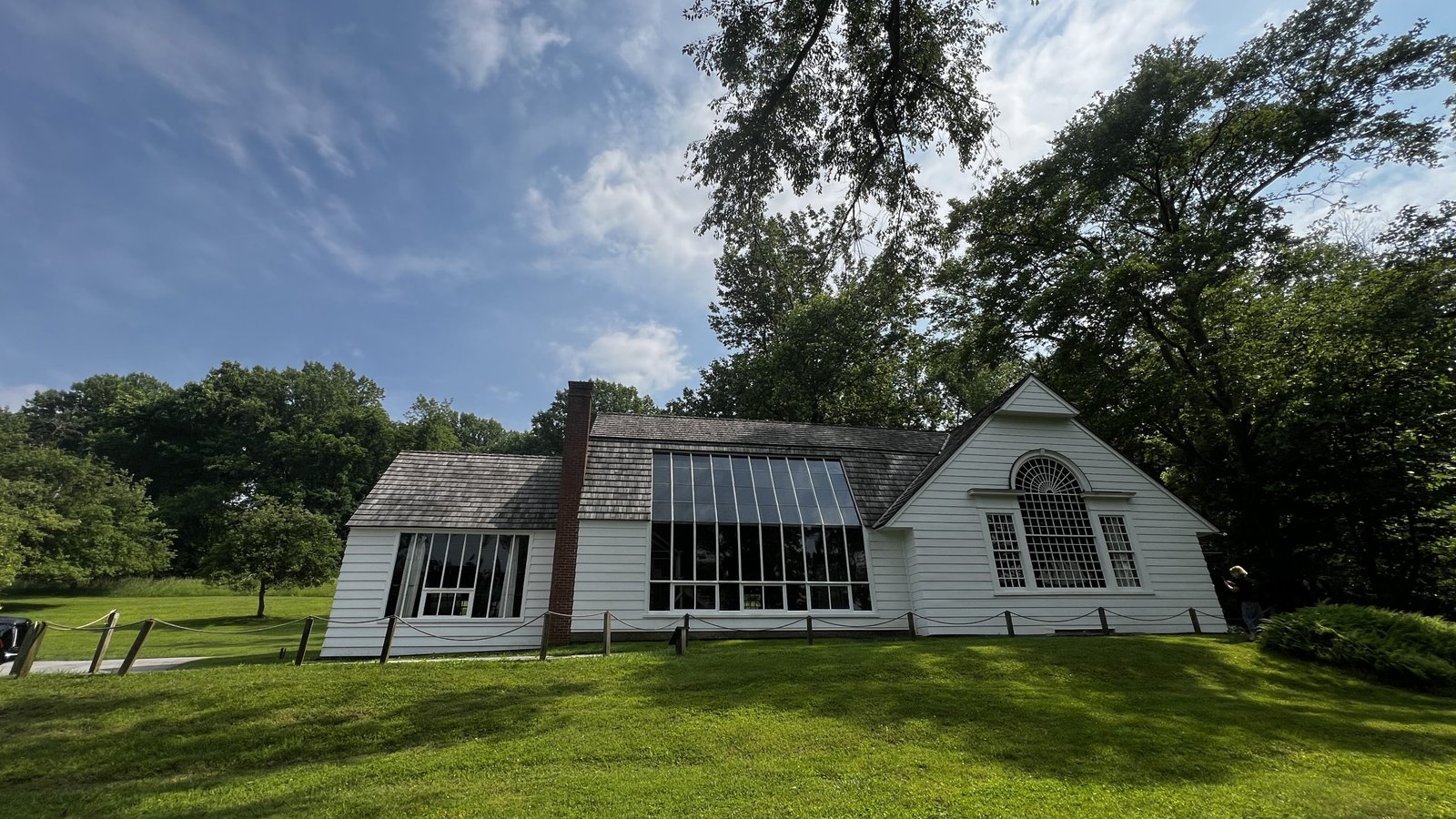
Guided Studio Tours
To truly grasp the depth of the Wyeth legacy, you need to walk the paths they walked and step inside the spaces that sparked their creativity. The Brandywine Museum offers guided tours of the N.C. Wyeth Home and Studio, and the Andrew Wyeth Studio.
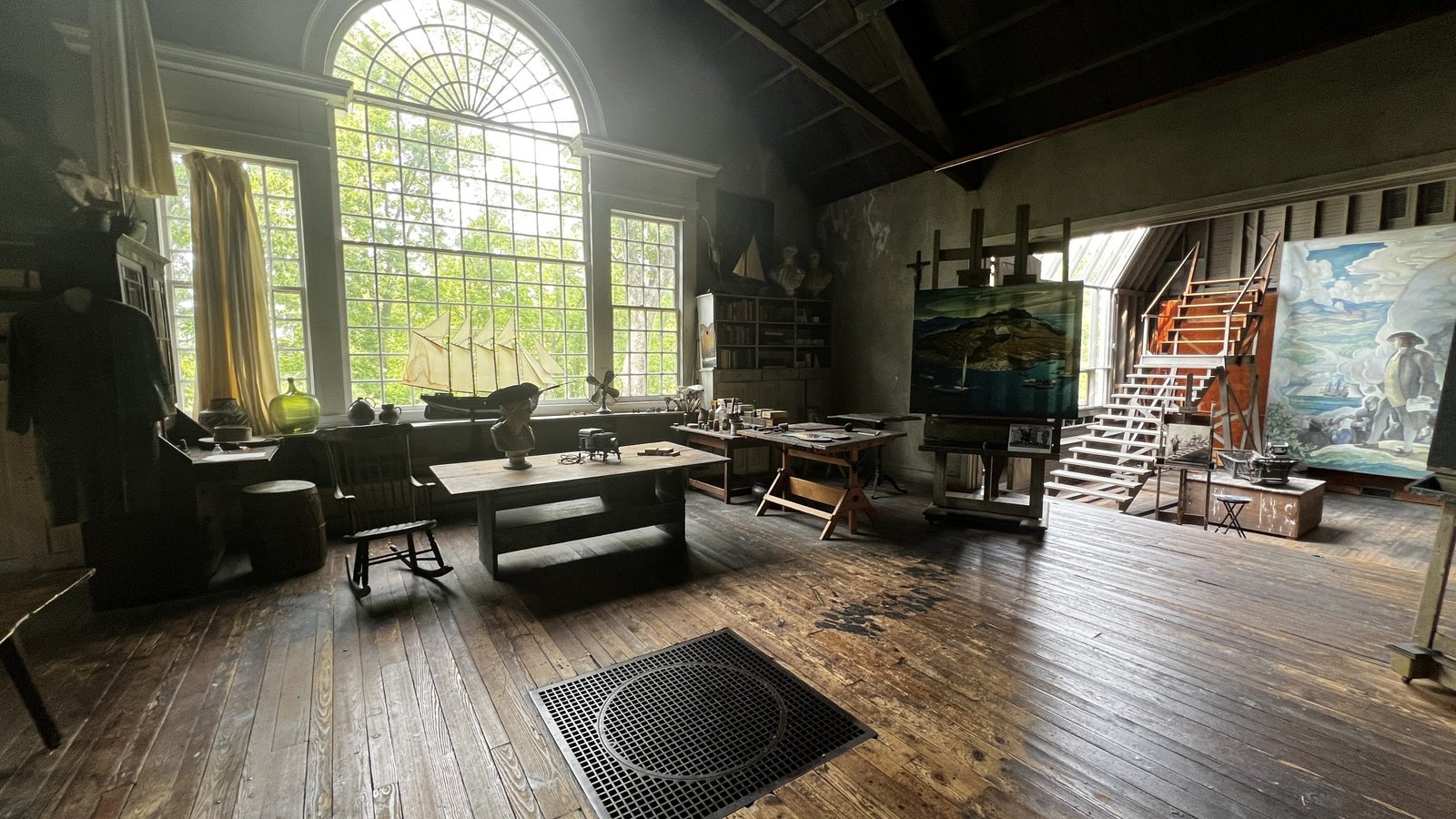
The Death of N.C. Wyeth
N.C. Wyeth’s studio stands frozen in time from the date of his death, when he was hit by a train on October 18, 1945. The accident happened just three days shy of N.C.’s 63rd birthday as he and his young grandson, also named Newell, were in an automobile that stalled on a railway crossing near their home. The southbound freight train on the Pennsylvania Railroad’s Octoraro Branch collided with the car, killing both occupants instantly.
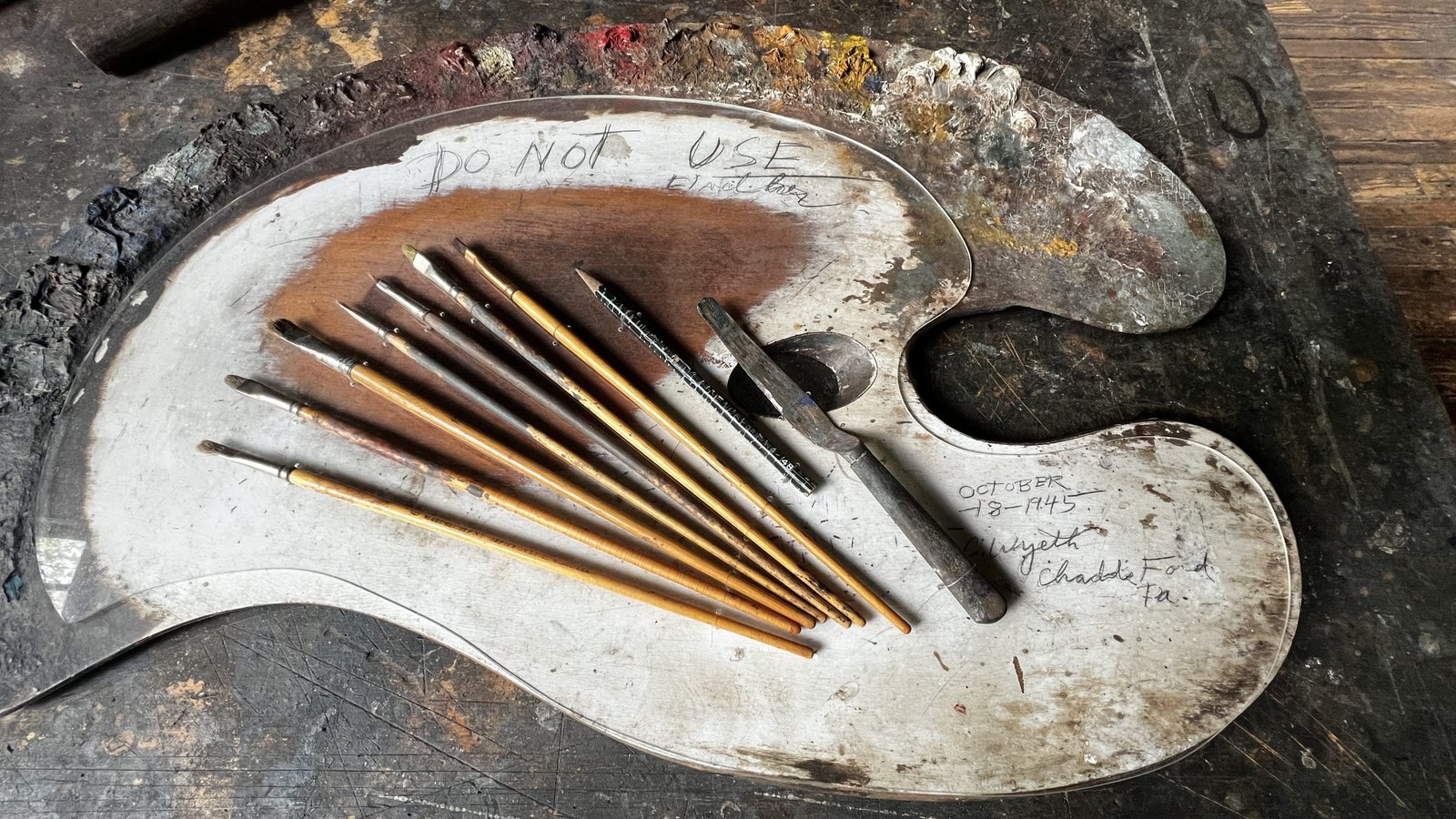
Upon learning of his death, his daughter rushed into her dad’s studio and scribbled in pencil on her father’s paint palette, “Do not use.” N.C. Wyeth’s paint-splattered smock hangs in his studio, near his paintbrushes, pigments, camera, and other personal belongings.
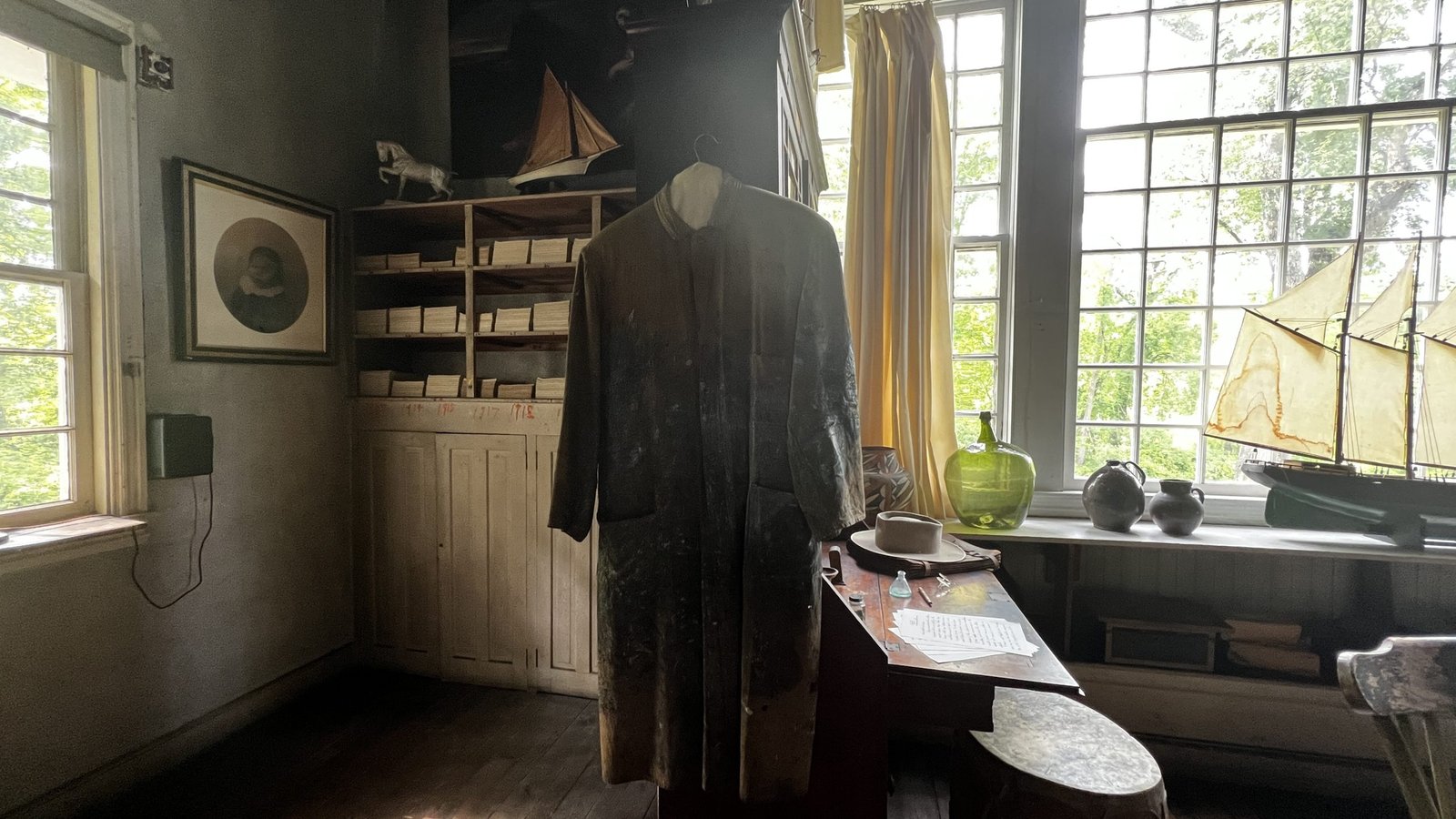
Inside the Studio of N.C. Wyeth
Light pours into his studio from a large window where N.C. painted his significant works using a staircase.
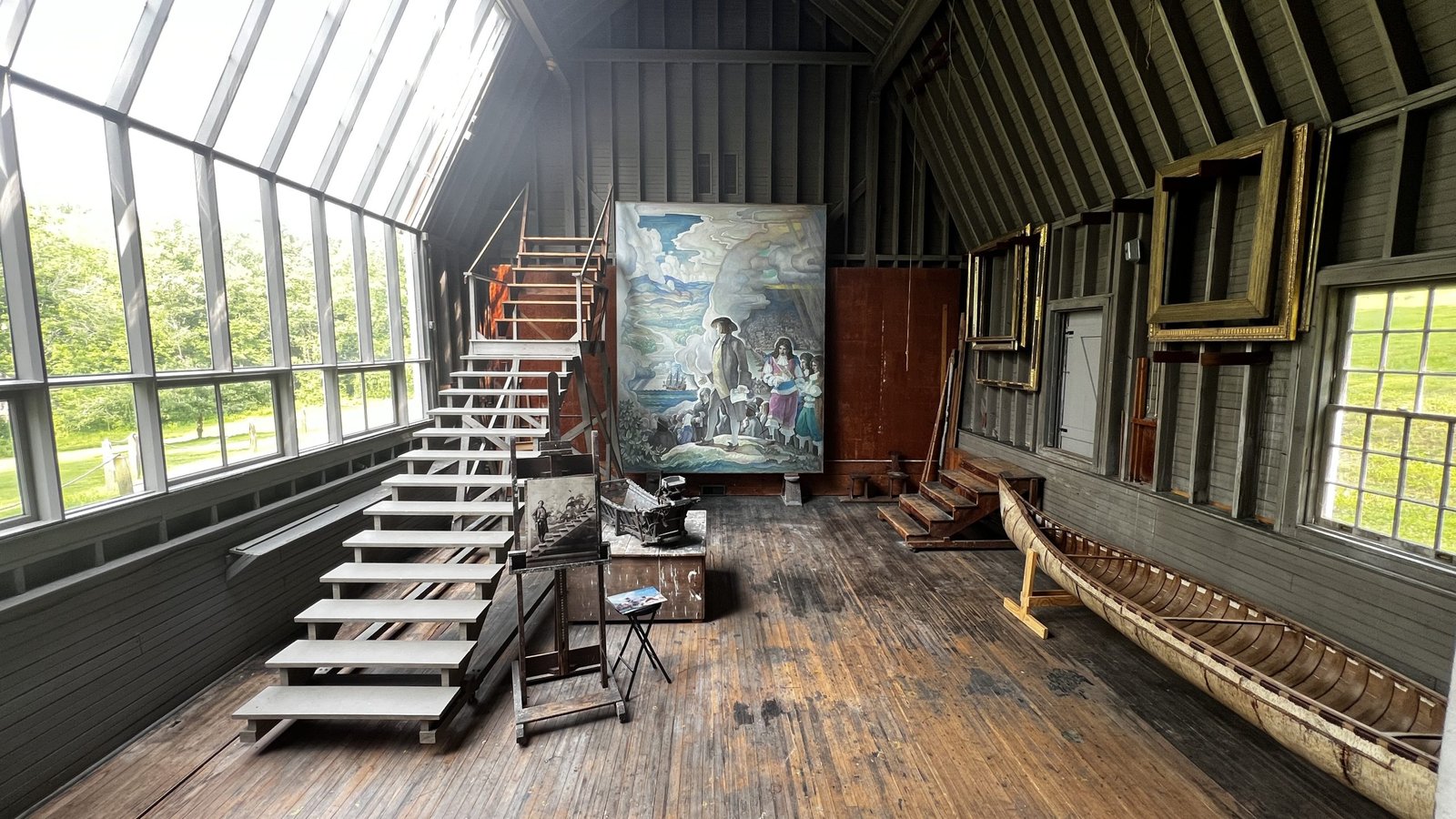
Andrew Wyeth’s studio is open for guided tours with a sign he placed on his front door that reads “I am working, so please do not disturb. I do not sign autographs.”
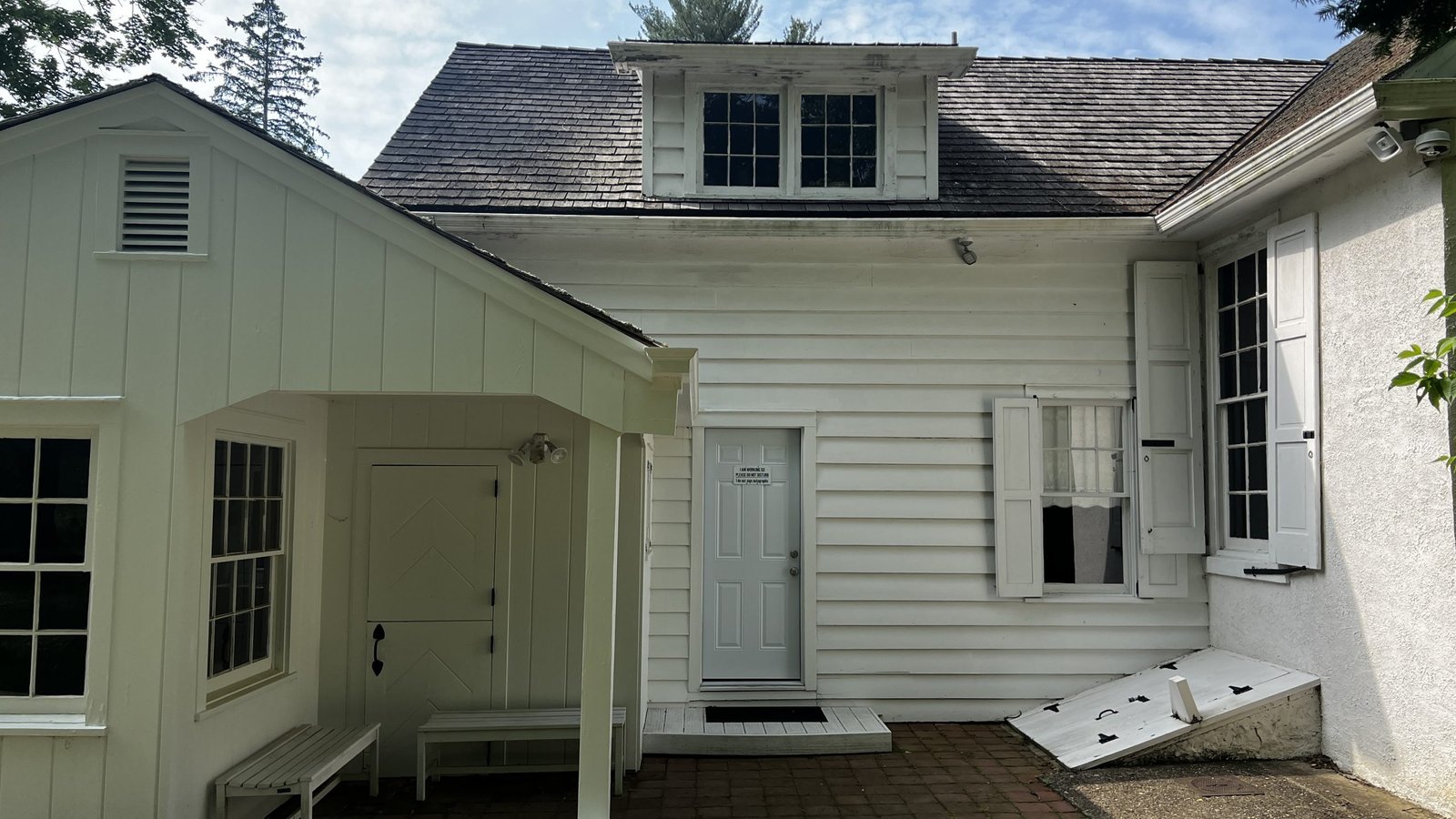
Andrew Wyeth’s Final Years and Legacy
Andrew Wyeth died on January 16, 2009, at the age of 91. He passed away in his sleep at his home in Chadds Ford, Pennsylvania, the same landscape that shaped and inspired much of his life’s work.
Some say his death marked the end of an era for American realism, leaving a powerful legacy in both the Brandywine Valley and the art world at large. Wyeth spent over seven decades painting the people, places, and landscapes of rural Pennsylvania, capturing and preserving a sense of place on canvas in a changing world.
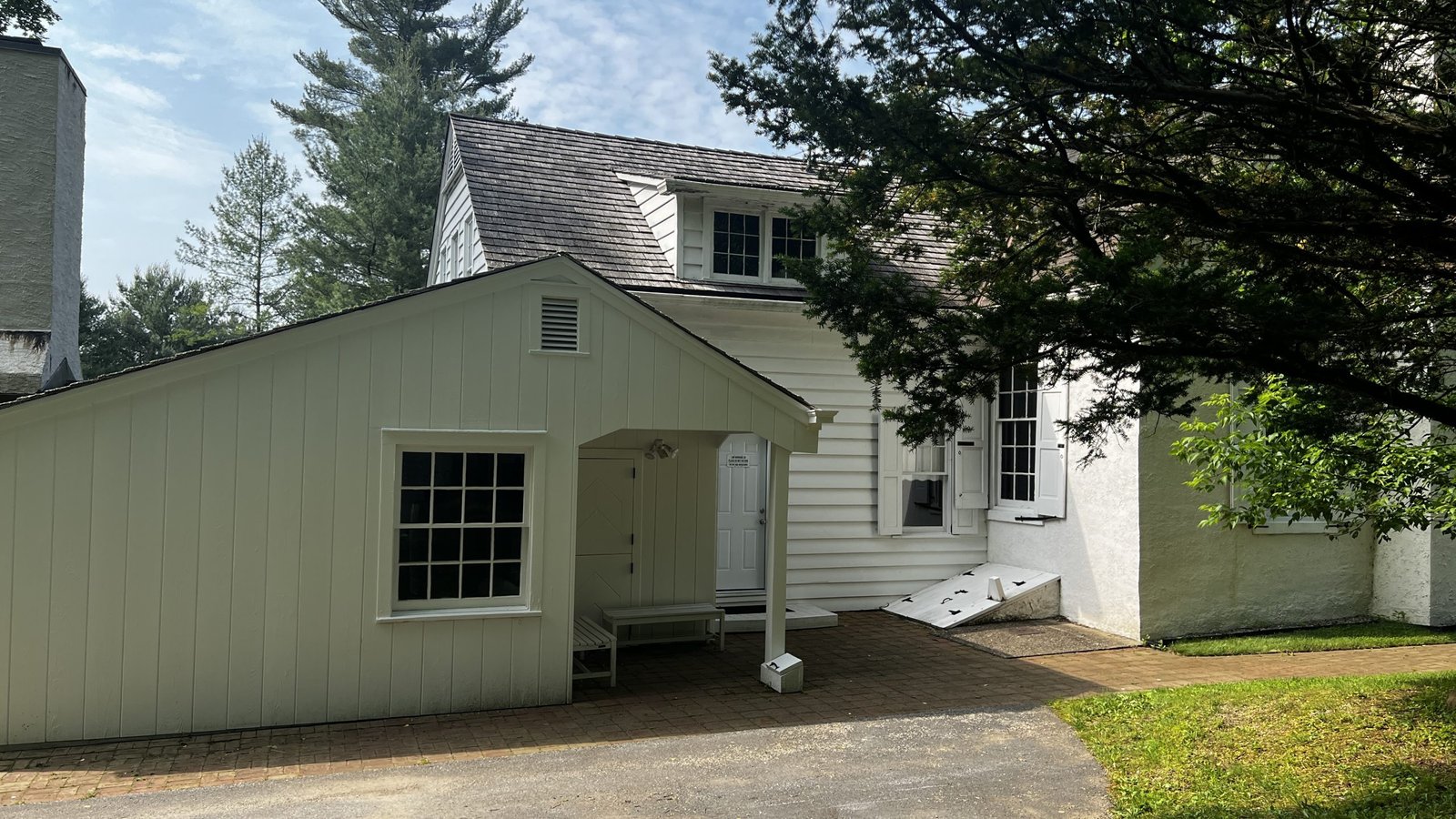
Visitor Information
What to know if you go:
Tours of the Andrew Wyeth Studio and the N.C. Wyeth House & Studio, both National Historic Landmarks, are available at select times. Check with the museum before you go.
The museum offers virtual tours of the artists’ studios.
Stay Connected Anywhere with Saily eSIM
Traveling soon? Skip the hassle of buying local SIM cards and enjoy instant connectivity with Saily eSIM.
With Saily, you can:
- Activate mobile data in minutes—no physical SIM needed.
- Choose affordable plans in over 150 countries.
- Keep your WhatsApp, contacts, and number without switching.

Whether you’re exploring cities or remote getaways, Saily makes staying online easy and affordable.
Get your Saily eSIM now and travel worry-free.
Learn more about exploring Brandywine Valley:
Explore More Tours:
Read More Museum Guide and Tips:
How Acadian Museum Keeps Cajun Culture Alive in Erath
Why You Can’t Miss the Delta Music Museum in Ferriday









